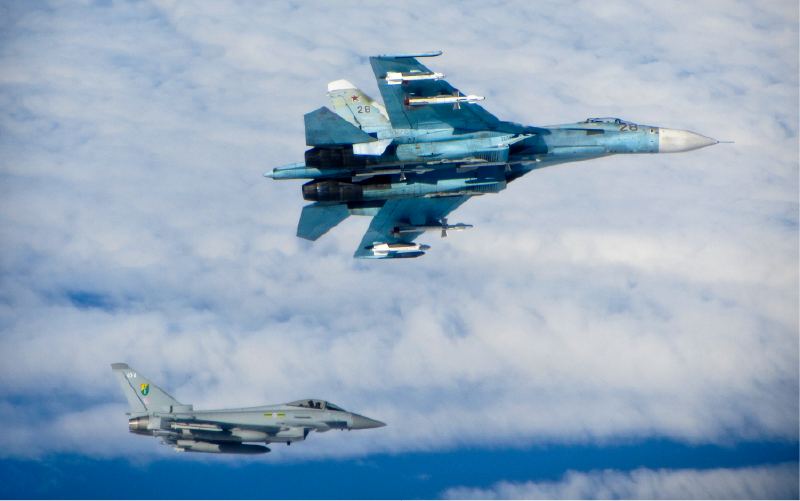Introducing the Military Incidents Project 2.0
This is the first in a blog series re-introducing Global Zero’s Military Incidents Project, begun in 2014 to track publicly-known military incidents between nuclear-armed countries. Visit the project’s homepage for additional updates and information.

The past few years have brought nuclear weapons to the forefront of the public imagination for the first time since the Cold War. Relations have worsened between the United States and Russia, which possess the vast majority of the world’s nuclear weapons. U.S. attempts to end North Korea’s nuclear weapons program have stalled, with leadership trading threats as weapons development continues. The U.S. and China both conduct frequent naval operations to assert their influence in the South China Sea as China, itself a nuclear-weapons country, continues to develop artificial islands in the area. Meanwhile, the long-standing conflict continues between India and Pakistan, both nuclear-armed, over the disputed territory of Kashmir.
In a world where only a few government leaders are empowered to make the decision to unleash the civilization-ending destruction of a nuclear attack, the media and an anxious public understandably focus on high-level political developments to understand the risk of a disastrous conflict.
But this obscures what we do know about how a nuclear exchange might actually happen. History has shown that misinterpretation of another nuclear-armed country’s behavior in a situation where there is little communication between the countries is an important and frequently overlooked source of nuclear risk. This “new normal” of international relations, combined with the fact that only a few minutes’ deliberation is allowed for deciding to launch a nuclear attack, means military business-as-usual could quickly and disastrously escalate.
As tensions rise and high-risk displays of force frequently replaces traditional diplomacy, often risky military operations are used in an attempt to change an adversary’s behavior through a show of force. Tracking the day-to-day behavior of the militaries of nuclear-armed states is essential to building effective diplomatic strategies for freeing the world from the threat of nuclear cataclysm.
Under the direction of Global Zero Program Associate Emma Claire Foley, Global Zero’s Military Incidents Project gathers and analyzes information on publicly-known military incidents involving nuclear weapons countries as well as those under the U.S. nuclear umbrella to better understand conflict risk among nuclear-armed states.
The project monitors four nuclear flashpoints identified by the Nuclear Crisis Group as hotspots of potential conflict: U.S./NATO-Russia, the Korean Peninsula, U.S.-China, and South Asia. The team collects open-source data on interactions between the militaries of nuclear-armed countries. Its next report, which will be launched in the spring of 2020, will include a breakdown of the risk factors presented by each incident. The project’s new feature is aimed at three key audiences:
- The public. The persistent popularity and high public profile of projects like the Bulletin of the Atomic Scientists’ Doomsday Clock are a reminder that many people want to better understand the existential threat posed by nuclear weapons. The Military Incidents Project will help them learn more about how experts assess the risk of nuclear conflict, and how to apply pressure on elected officials to address that risk.
- The media. Every new abandoned treaty and extravagant threat of violence prompts a feverish news cycle. The project will help inform political and news analysis, drawing on over five years of data collection to shed light on trends in nuclear politics.
- Experts and policymakers. Those working in the fields of arms control, disarmament and conflict resolution can use the project’s over five years of data collection to assess longer-term trends in diplomatic and military relations between nuclear-armed states.
As long as there are nuclear weapons in the world, the risk of nuclear use will persist. As long as those weapons are controlled by top leadership alone, their decisions will have a disproportionate influence on the fate of human civilization. Until that changes, however, independent research on the day-to-day military operations of the most powerful armies in the world will be an essential element of understanding the existential threat posed by nuclear weapons.